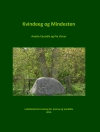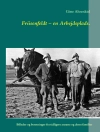This book explores novel theories, strategies and methods for re-naturing cities. It enables readers to learn from best practice and advances the current theoretical and empirical understanding in the field. The book also offers valuable insights into how planners and policymakers can apply this knowledge to their own cities and regions, exploring top-down, bottom-up and mixed mechanisms for the systemic re-naturing of planned and existing cities.
There is considerable interest in ‘naturalising’ cities, since it can help address multiple global societal challenges and generate various benefits, such as the enhancement of health and well-being, sustainable urbanisation, ecosystems and their services, and resilience to climate change. This can also translate into tangible economic benefits in terms of preventing health hazards, positively affecting health-related expenditure, new job opportunities (i.e. urban farming) and the regeneration of urban areas.
There is, thus, a compelling case to investigate integrative approaches to urban and natural systems that can help cities address the social, economic and environmental needs of a growing population. How can we plan with nature? What are the models and approaches that can be used to develop more sustainable cities that provide high-quality urban green spaces?
Зміст
Introduction.- Part 1. Cities and Nature in History.- Chapter 1. Understanding Landscape: Cultural Perceptions of Environment in the UK and China.- Chapter 2. Green Wedges: the Resilience of a Planning Idea.- Chapter 3. Demystified Territories: City vs. Countryside in Andrea Branzi’s Urban Models.- Chapter 4. The Introduction of Nature in the Austrian Radicals Practice.- Chapter 5. University Campuses: Experimentations on the Relations Between City and Nature in Brazil.- Part 2. Planning Models, Theories and Methods for Renaturing Cities.- Chapter 6. Towards a Spatial Planning Framework for the Re-Naturing of Cities.- Chapter 7. Green Networks as a Key of Urban Planning with Thermal Comfort and Wellbeing.- Chapter 8. Relationships Between Urban Green Areas and Health in China, UK and Brazil: Approaches and Experiences.- Chapter 9. Planning a Green City: the Case of Helsinki, 2002-2018.- Part 3. The Right to Green: Multiple Perspectives.- Chapter 10. The Democracy of Green Infrastructure: Some Examples from Brazil and Europe.- Chapter 11. Re-naturing the City for Health and Wellbeing: Green/Blue Urban Spaces as Sites of Renewal and Contestation.- Chapter 12. Do Built Environment Assessment Systems Include High Quality Green Infrastructure?.- Chapter 13. Establishing Payment for Environmental Services in Urban Areas.- Chapter 14. Perspectives on Green: Recent Urbanisation Works and Measures in Brazil / India.- Part 4. Systemic Planning for Resilient Green and Blue Cities.- Chapter 15. Understanding and Applying Ecological Principles in Cities.- Chapter 16. People-Policy-Options-Scale (PPOS) Framework: Reconceptualising Green Infrastructure Planning.- Chapter 17. For More Sponge Cities.- Chapter 18. Green Infrastructure in the Space of Flows: an Urban Metabolism Approach to Bridge Environmental Performance and User’s Wellbeing.- Part 5. Conclusions.- Chapter 19. Renaturing our Future Cities.
Про автора
Dr. Fabiano Lemes de Oliveira is a Reader in Urbanism and Architecture at the University of Portsmouth, UK. He is the Research Leader at Portsmouth School of Architecture and the coordinator of the Masters in Sustainable Cities. His research expertise is in planning models aimed at balancing urbanisation with nature, in particular related to the green wedge idea; green and blue infrastructure; sustainable and resilient planning models and planning history and theory. He was the coordinator of the British Council/ FAPEG Newton Fund ‘Re-Naturing Cities’ project and is the author of the book Green Wedge Urbanism: History, Theory and Contemporary Practice (Bloomsbury, 2017). Dr. Ian Mell is a Senior Lecturer at the School of Environment, Education and Development, University of Manchester, UK. He is a Landscape Planner with a specialism in Green Infrastructure policy, planning and development. He has worked in academia, the environment sector and local government, and has extensiveexperience of researching landscape issues in the UK, EU and more widely in the USA, India and China. He is the author of Global Green Infrastructure (Mell, 2016, Routledge) and Green Belt: Part, Present, Future? (Sturzaker & Mell, 2017, Routledge).












